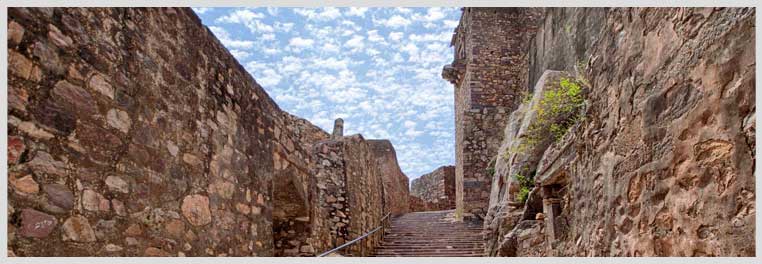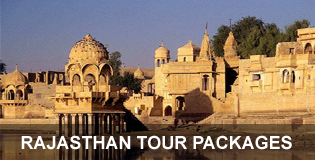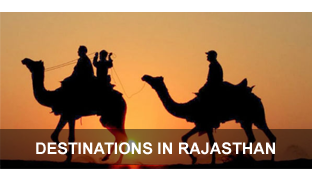Sawai Madhopur Travel Guide
At a Glance

Sawai Madhopur. Gateway to the world renowned Ranthambhor National Park. And one of the two national parks of the State under Project Tiger. Lying on the main Delhi-Bombay line, the Tiger Reserve is barely 12 km away fronT here.
Ranthambhor is composed of innumerable pages of history. Govinda, grand-son of Prithviraj Chauhan, took over the reigns of this land in the 13th century. Later, he was succeeded by Vagbhata who built a stately temple at Jhain and beautified Ranthambhor. Many rulers won and lost. Many battles were fought. In the middle of the 15th century, Rana Kumbha captured the fort and later handed it over, to his son. Thereafter, Hada Rajputs of Bundi, Akbar, Aurangzeb occupied this magnificent structure. When Aurangzeb died, the fort was takenover by the ruler of Jaipur. Ranthambhor was then the private hunting reserve of the Maharaja of Jaipur. Among the more famous who were part of these hunting parties were the Queen Elizabeth II and the Duke of Edinburgh.
Dating back to the 994 A.D., this imposing fort is perched atop a hill at an altitude of over 200 metres amidst a dense forest. The structure comprises huge walls, colossal gates and some splendid monuments within-its precincts. Strategically built on the border of Rajasthan and Malwa, the fort is steeped in history as it has witnessed a series of battles being fought here. An 8th century Ganesh temple on an open land, attracts hundreds of thousands devotees. A fair is held here on Bhadrapad Sudi Chaturthi.
The park is situated in a very beautiful valley overlooking the Ranthambhor fort. The wildlife reserve figures amongst the notable national parks across the country. Wildlife viewing opportunities are in abundance here. With extensive flora and fauna varieties, the park is a favourite of the tourists. Sprawling dry deciduous, forest ranges of Dhok in Ranthambhor are known for tigers. Numbering over 28, an encounter with this predator is not rare here. Prominent prey species of tiger include sambar, cheetal, .nilgai, wild-boar, chinkara and langur. Interestingly, the peafowl also forms a major menu item of this big cat. Placid waters of three lakes—Padam Talab, Rajbagh and Milak Talab—in the park beckon large number of migratory and local birds. Besides, these lakes make available supplenutritive food for the sambar who readily takes to water for feeding. And it's treat to eyes when you watch fresh-water crocodiles basking in the winter sun for regulating their body temperature. Though leopard is a co-predator of the tiger, yet avoids contact with it. Hyena and jackal are its camp followers. The reserve also harbours a little population of sloth-bear and python. For going around the park, jeeps are available on hire. Besides Jogi Mahal, other units also offer comfortable, staying facilities outside the park.
General Information
| Climate Summer : | Mean Max 37.0°C, Mean Mm 23.0°C |
| Climate Winter : | Mean Max 29.0°C, Mean Mm 9.1°C |
| Rainfall : | 68 cm |
| Best Season : | October-March |
| Clothing Summer : | Light Tropical |
| Clothing Winter : | Light Woollen |
| Languages : | English, Hindi, Rajasthani |
| Local Transport : | Un-metered taxis and auto-rickshaws. Also cycle-rickshaws and tongas. |
Travel Information
Air :Jaipur 165 km is the nearest airport.
Rail :New Delhi is the best place to start. Ranthambhor National Park is about 12 km away from the Sawai Madhopur Railway Station.
Road :A good network of bus services connect Sawai Madhopur. with many places around.
Khas perfumes and other objects made of Khas, like fans, small boxes, caps etc.






